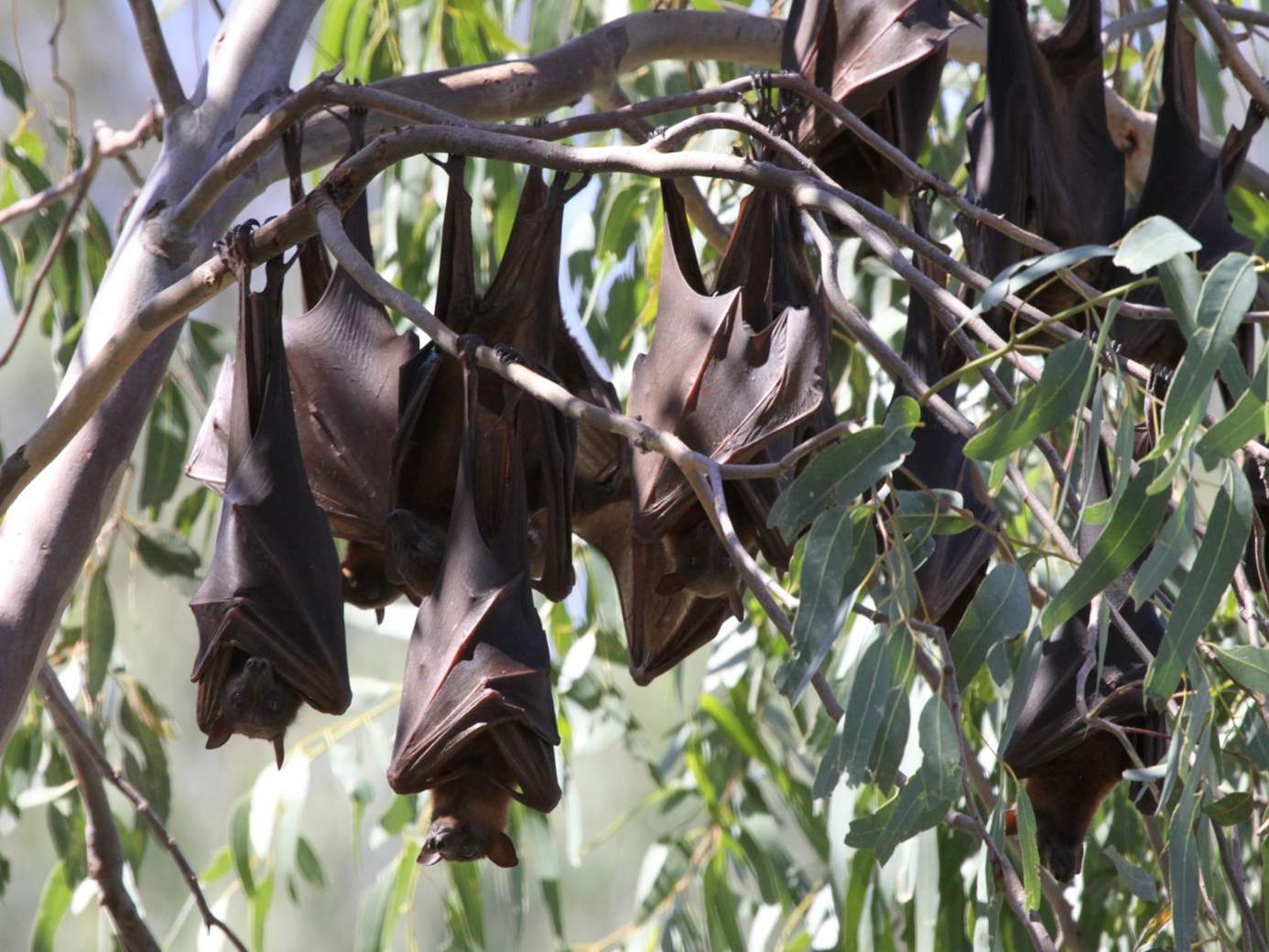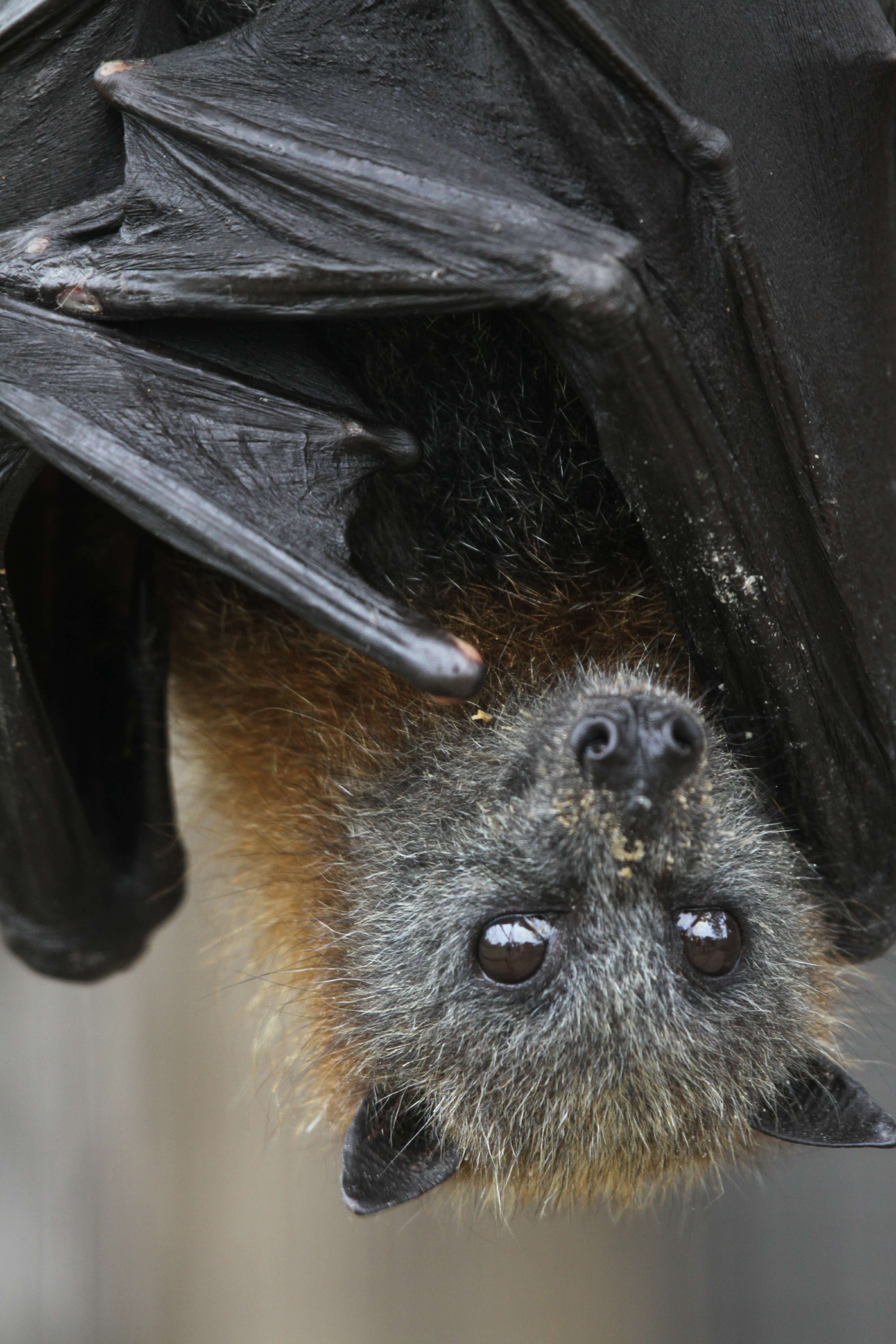Bats are the June Catchment Critters of the Month as part of the Goulburn Broken Catchment Management Authority’s (CMA) Grey Box Grassy Woodlands community wildlife awareness campaign. This project is supported by the Goulburn Broken CMA through funding from the Australian Government’s National Landcare Program.
Goulburn Broken CMA Project Officer, Janice Mentiplay-Smith, said that as the only mammals capable of sustained flight, tiny microbats and large megabats, also known as flying foxes, were amazing mammals of the air.
“The fast and furious microbats dart through the night sky, leaving their roosts at dusk to pursue their insect-based dinner. In a single night microbats can eat at least one third of their body weight; mosquitoes would feature strongly on the menu. Multiply this by many, many thousands of microbats and it’s not difficult to see how these tiny flying mammals provide a valuable pest control service,” Ms Mentiplay-Smith said.
There are 12 species of microbat that call the Goulburn Broken catchment’s Grey Box Grassy Woodlands home. Microbats are placental mammals and not marsupials, meaning they do not have a pouch and give birth to fully developed young. There are more than 60 species of microbat in Australia.
“These tiny mammals weigh between 3-150 grams, depending on the species,” Ms Mentiplay-Smith said.
“All microbats use echolocation “pulses” to locate and gauge the distance between themselves and other objects, including prey. They emit a sound and listen for it as it bounces back. The time taken for the pulse to return indicates the location of the object. Normally a microbat emits about 10 pulses per second. When an insect is detected these increases to more than 100 pulses per second.”
Although called flying foxes, other than being a mammal, megabats are not related to foxes - their name comes from their “foxy” facial features.
“Unlike microbats that use echolocation to seek out their insect prey, as fruit and nectar feeders, megabats rely upon their large eyes and keen nose to seek food at night,” Ms Mentiplay-Smith said.
“The two species of flying fox in the Grey Box Grassy Woodlands are the Little Red Flying-fox (Pteropus scapulatus) and the Grey-headed Flying-fox (Pteropus poliocephalus).
“Flying foxes are major pollinators of eucalypts; without them the composition of Australia’s forests would be very different. Flying foxes will travel up to 80 kilometres a night to feed, and in the process of feeding transfer pollen thus expanding the tree’s gene pool and capability to survive.
“Because they are integral to seed dispersal and pollination, the rapid decline in flying fox populations is very concerning. It means the long-term survival of our unique eucalypt forest and rainforest ecosystems is under threat.”
The Grey-headed Flying-fox is one of the largest bats in the world, weighing up to one kilogram and sporting an impressive wingspan of up to one metre. In contrast, the Little Red Flying-fox is the smallest flying fox in mainland Australia. Like the Grey-headed Flying-fox, the Little Red Flying-fox is important for pollination and seed dispersal.
Roosting above a water body helps flying foxes remain cool in the summer heat. Grey-headed Flying-foxes and Little Red Flying-foxes roost in camps around swamps, woodlands, patches of rainforest and along creeks. Flying foxes do not generally have a “fixed address”, rather the availability of food influences where they live and move to.
Visit www.ausbats.org.au for more information. Read more about bats and other mammal species present in the Goulburn Broken catchment’s Grey Box Grassy Woodlands environments in the Mammal Book, a 58-page booklet featuring beautiful photographs and informative text. To view a copy, visit the website The Mammal Book - GB CMA - Goulburn Broken CMA

Little Red Flying-fox (S Wilson)

Grey headed Flying-fox (S Wilson)